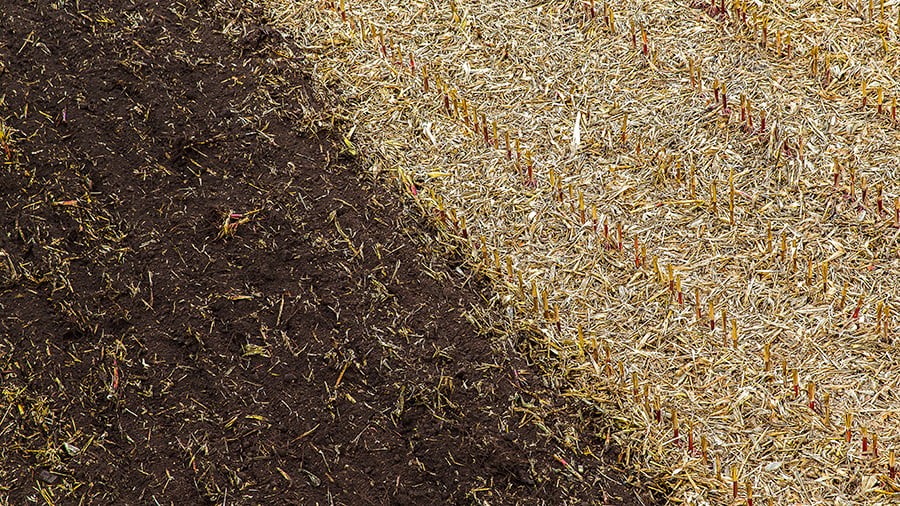
Seedbeds
How do you create an optimal seedbed, which characteristics should it have and which requirements should it fulfill? Since the seedbed, in several ways, is key to a high yield we would like to share our knowledge with you.
In the guides below you are presented with hands on facts of how you can create the best possible conditions for seeding, irrespectively of crops on your farm.
Seedbed creation
There are several approaches that can be used in achiveing a good seedbed preparation. The deciding factor in choosing approach is how the various techniques manage harvest residues.
The seedbed lays the foundations for crop establishment. The technique used depends on many different factors, e.g. harvest residues, the equipment available, soil type, climate, labour requirement, etc.
Ploughing warms up the soil and buries plant residues so that they do not obstruct sowing. However, ploughing disrupts the soil structure and increases oxidation of the organic material. Without ploughing, the organic material and the soil structure are retained, but the straw can cause problems with sowing and can transmit diseases.
The seedbed and drilling using different techniques
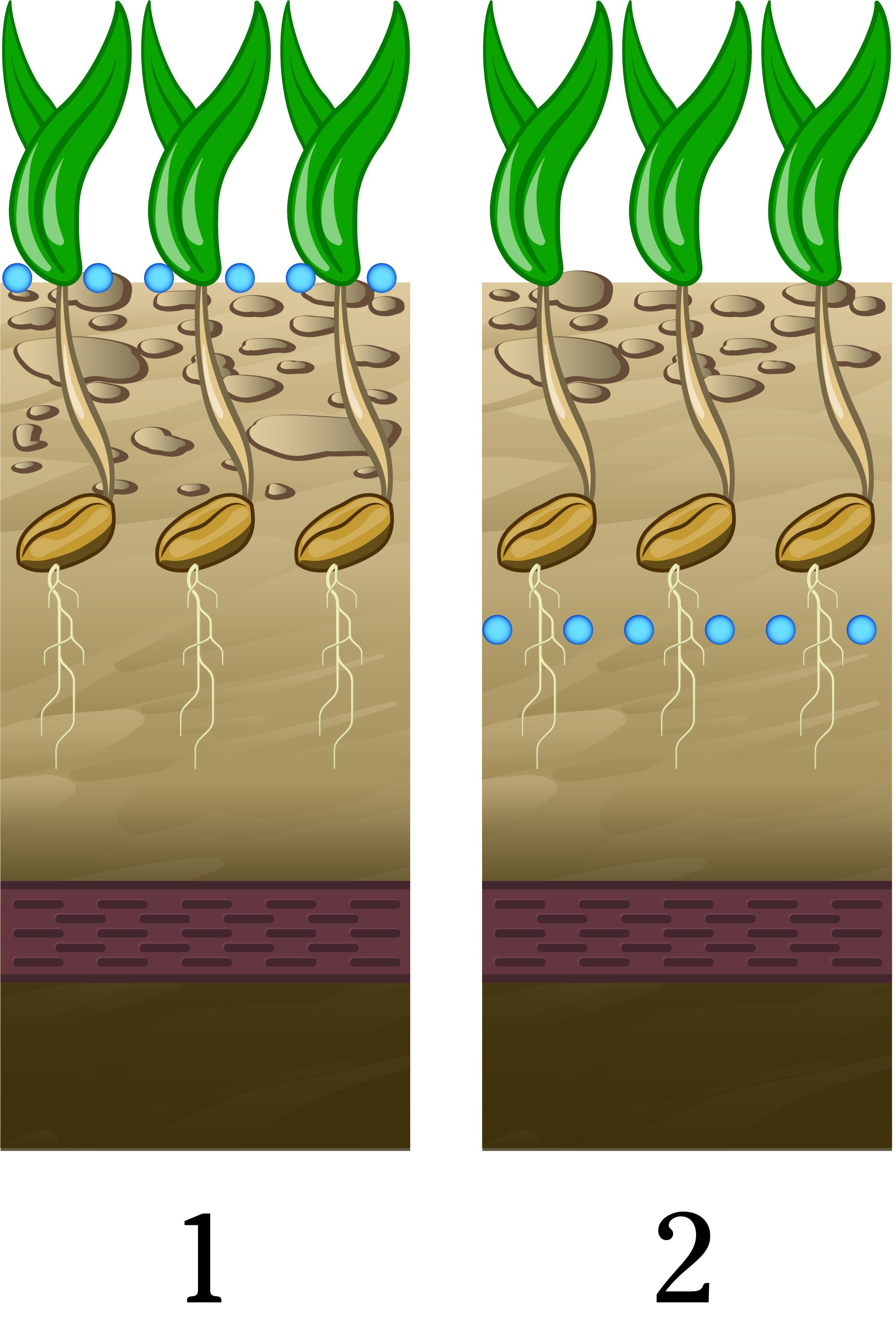
1. Conventional technique - ploughing in of straw, cultivation to sowing depth with a tine/disc cultivator, conventional drilling, fertiliser spreading.
2. Ploughing in of straw, shallow cultivation, drilling with Rapid where seed and fertiliser are placed in the soil simultaneously.
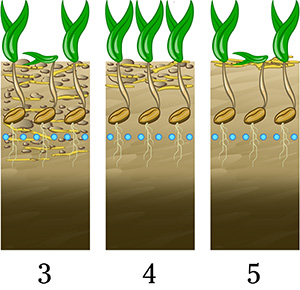
3. Minimal tillage – tillage of straw by cultivator, drilling with Rapid where seed and fertiliser are placed simultaneously in the soil/straw layer.
4. Shallow tillage – shallow burial of straw at the surface, drilling with Rapid where seed and fertiliser are placed simultaneously in the soil/straw layer.
5. Direct drilling – drilling with Rapid where seed and fertiliser are placed simultaneously without prior soil tillage. The straw remains on the surface.
Managing plant residues
An important difference between the techniques is how they manage plant residues. Plant residues affect the possibilities to achieve good contact between soil and seed. If there are large amounts of straw remaining, a great deal of tillage is required to ensure that the straw does not impede the next crop, but is broken down as efficiently as possible. The type of straw present, i.e. the precrop, determines how fast it decomposes and how effectively it can be handled by machinery.
Baled or buried
The straw can be baled and removed or buried in the soil. Decomposition of plant residues can improve the structure of a soil with poor structure. If the straw has an alternative value in animal production or for heating, it is often baled and collected in. This makes soil tillage easier in the short term. However, tillage may become more difficult in the long term if the amount of organic material decreases.
Ploughing sometimes justified
The choice of tillage technique can also be affected by the value of the following crop. If the crop can be sold at a high price, this can balance out the costs of ploughing if ploughing leads to better establishment. Another aspect to consider is the pressure from weeds and diseases. If there is a risk of transmission of disease, this can justify full inversion tillage. Difficult grass weeds may also need to be ploughed under. Finally, the ability of the machinery to handle large amounts of plant residues is another factor to consider.
Optimal reconsolidation
The aim of seedbed reconsolidation is to create good contact between seed and soil in order to provide an optimal supply of water, nutrients and oxygen to seeds and roots according to figure "Reconsolidation of the seedbed".
Too little reconsolidation, i.e. soil too loose around the seed, can lead to malfunction of capillary transport of water because the pores are too large. This means that the soil round the seed can become too dry. Too much reconsolidation means instead that the large pores are compressed and become less effective as regards draining away excess water and transporting oxygen to and carbon dioxide from the seed. This can lead to oxygen deficiency for the roots. On lighter soils (medium and fine sand), light machinery has the best effect, whereas heavy clays need heavier machinery to cultivate and reconsolidate the soil.
Reconsolidation of the seedbed
Soil consists of around 50% solid material, with 50% pores. In the ideal case, half the pores are filled with water, half with air. However this varies widely depending on how much rain has fallen, the structure of the soil and how it is tilled.
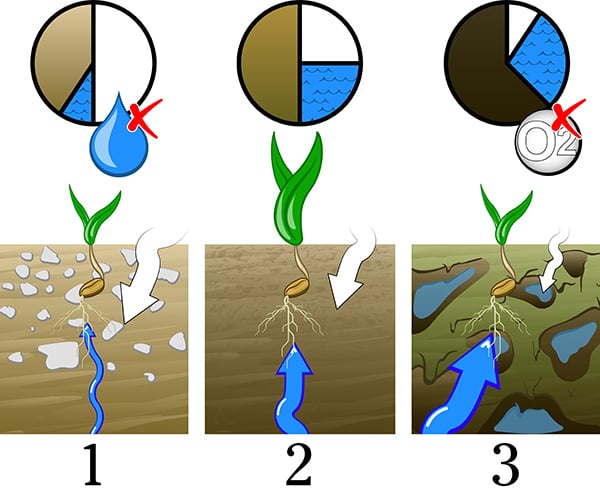
- Too little reconsolidation, i.e. soil too loose around the seed, can prevent capillary transport of water because the pores are too large. This means that the soil around the seed becomes too dry, so the seed dries out and the seedling wilts.
- Optimal reconsolidation provides good contact between seed and soil, so the seed is supplied with water through capillary transport. At the same time, there are enough large pores to transport oxygen.
- Too much reconsolidation means in contrast that the large pores are compressed and become less effective as regards draining away excess water and transporting oxygen to and carbon dioxide from the seed. This can lead to oxygen deficiency, which kills the roots.

Seedbed requirements
The task of the seedbed is to provide the seed with conditions resulting in fast and uniform emergence. This requires water, air, warmth and an environment free from diseases. The ideal seedbed lays the foundation for high yield. The seedbed acts as a nursery for the germinating seed and must provide the right conditions in order to allow the crop to emerge quickly and uniformly.
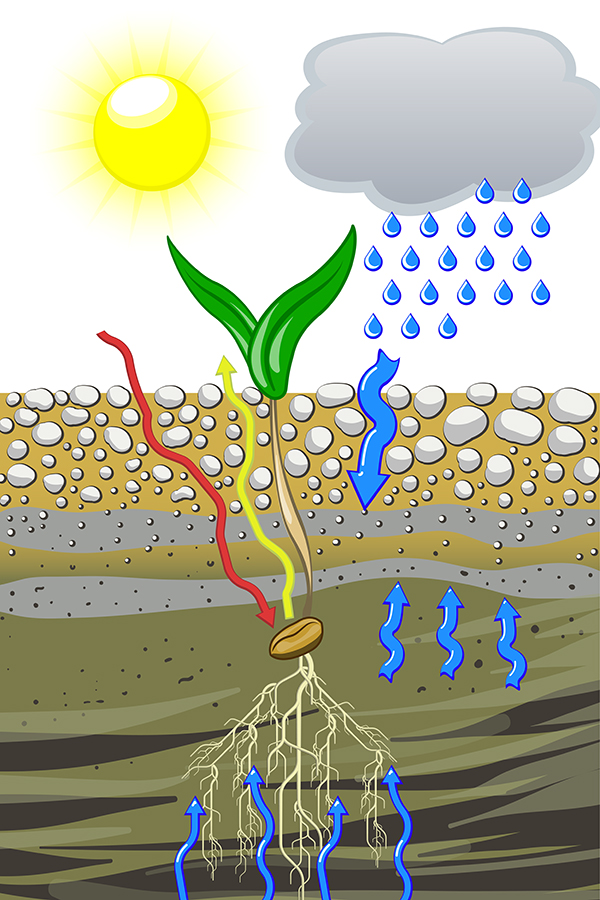
The ideal seedbed
The most important properties of the seedbed are to:
- absorb heavy rain, providing stability against crusting and erosion
- act as a barrier to evaporation
- provide capillary water transport for germinating seeds
- act as a nutrient, water and oxygen reserve, promote root development
The ideal seedbed should have the appearance shown in the picture with, starting from the top, a layer of coarser aggregates, including organic material, that protects against crust formation, followed by a layer of finer aggregates that prevent soil moisture from evaporating off and create good contact between seed and soil.
Water is transported to the germinating seed through capillary transport from below, which requires good contact between seed and soil. On light soils, but also on heavy clay soils, this capillary transport of water is weak and it is particularly important to utilise the moisture that is present in the soil from the start.
Four basic seedbed requirements
Seedbeds can vary in different ways, but in order to accomplish their task all seedbeds need to provide the seed with these fundamental conditions:
- water
- air
- warmth
- an environment free from diseases
1. Water around the seed
In the case of cereal, germination begins with the grain taking up water. The swollen grain germinates when the water content in the grain increases from 13-14% up to 45-60%. At least 6% plant-available water is needed around the seed to ensure a reliable water supply and emergence. To ensure that the grain will have access to water, it is also important to create good contact between seed and soil, since the water is taken from the soil around the seed. This means that the soil particles around the seed should not be too coarse. A good rule of thumb is that at least 50% of the aggregates in the seedbed should be less than 5mm in diameter in order to ensure emergence even if no rain falls after drilling.
Drilling depth is also very important for water availability. The right drilling depth is a compromise between placing the seed at sufficient depth to find enough water for germination and sufficiently shallow depth to allow rapid emergence as in figures below.
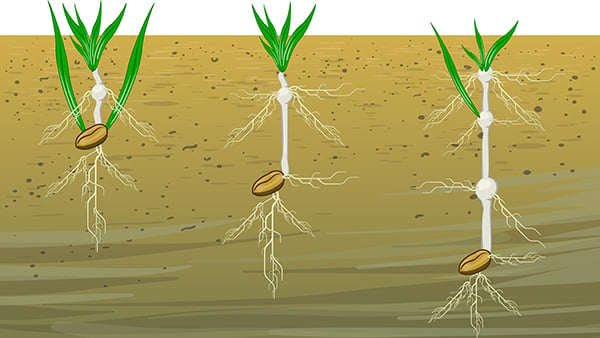
Drilling depth is a compromise between sufficient depth to avoid drying the seed and sufficiently shallow depth to give high emergence and good plant density
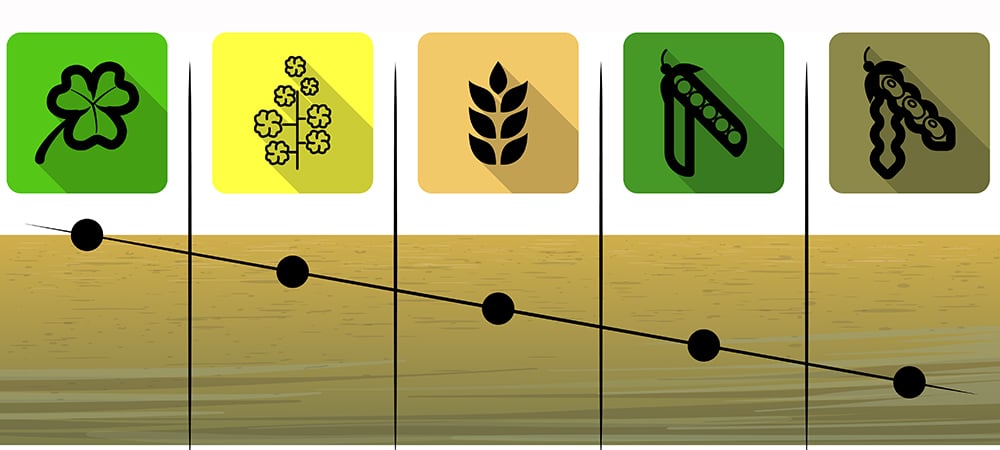
As a rule of thumb, drilling depth should be approx./max. 10 times seed diameter. For example, rapeseed has a diameter of 1.5-2.0mm and thus the optimal drilling depth is approx. 15-20mm.
A good rule of thumb here is that the drilling depth should be 10 times the diameter of the seed, as illustrated in figure. According to this principle, peas and beans are positioned deeper in the soil, where there is often moisture in the seedbed. Rapeseed, on the other hand, must be placed at shallow depth, where it is more difficult to guarantee that there is sufficient soil water. However, water supply should never be compromised by placing the seed at too shallow depth. Instead, the seed should be placed where there is moisture.
2. Air in loosened soil
Plants store nutrient reserves in their seeds, fruits or grains in the form of starch, oils or proteins. These reserve nutrients must last until the green plant parts can supply the plant with energy through photosynthesis. When the seed takes up water, this starts an enzymatic process that breaks down the nutrient reserves during respiration. This process requires oxygen, which is available in the air round the seed. Therefore it is important that the soil covering the seed is loose enough to allow air and oxygen to pass through. It is equally important that the carbon dioxide formed during respiration can be transported away. If a soil becomes waterlogged by heavy rain after sowing, this can cause oxygen deficiency and subsequent problems with germination.
3. Warmth speeds up emergence
The soil is warmed up in spring mainly by solar radiation, but also indirectly by rain and air flows. The temperature in the seedbed has a great influence on how rapidly the seed germinates and on seedling growth. Wheat, barley and oats can germinate at around 3-5°C, but prefer an average temperature of around 20°C for fast establishment. The temperature of the soil is the result of an interplay between heat capacity, thermal conductivity and evaporation. Dry, porous soil warms up more easily than damp or waterlogged soil. The higher the soil water content, the slower the soil temperature rises in spring.
4. Decrease diseases with a crop rotation
In order to ensure that the seedbed is as free from diseases as possible, a varied crop rotation should be used. The ideal is for monocotyledons and dicotyledons to be varied so that they occur alternately in the crop rotation. Another rule of thumb is to ensure that plant residues from the previous crop are decomposed before sowing. This decreases the potential disease pressure and ensures that the residues do not obstruct the emergence of the next crop.

Dictionary:
Capillary = water that can rise upwards in the soil within the fine pores through binding of the water molecules in the pores, adhesion, but also through attraction between water molecules, cohesion. Silty soils have high capillarity and combine a large height of capillary rise with a high rate of capillary rise
Precrop = the precrop is the crop grown before the present growing season, i.e. the previous year’s crop, and it affects the current year’s crop through the amount of residues it leaves, the nitrogen release from these, soil structure, disease pressure, etc
Dictionary:
Carbon dioxide = gaseous waste product (CO2) of cell respiration in the roots that is also the building brick together with water for sugars created by the plant through photosynthesis
Dicotyledons = plants that germinate from seed to produce a seedling with two seed leaves (cotyledons), e.g. oilseeds, peas, beans, linseed, sugar beet, etc
Enzymatic process = enzymes are proteins that control chemical reactions in the cell through increasing or decreasing the rate of processes
Heat capacity = the amount of warmth/energy (kJ) required to increase the temperature of 1kg of a material by 1°C
Monocotyledons = plants that germinate from seed to produce a seedling with only one seed leaf (cotyledon), e.g. grasses and cereals
Respiration = cell respiration is the process by which nutrients in the cell are broken down to create energy – in the case of seed, starch, proteins and oils are broken down to give the seed (or the grain) the energy for germination
Thermal conductivity = the capacity of a material to conduct heat